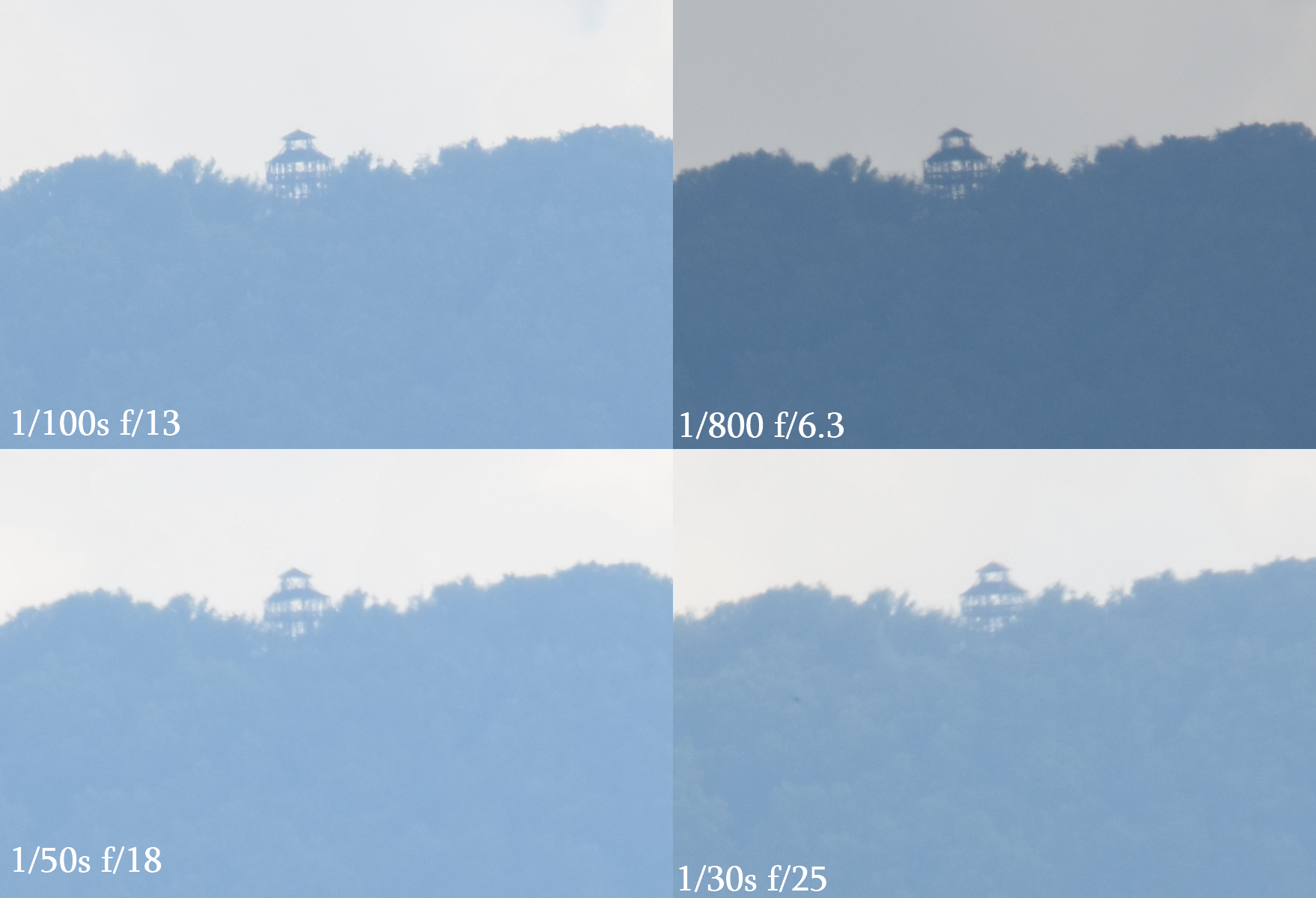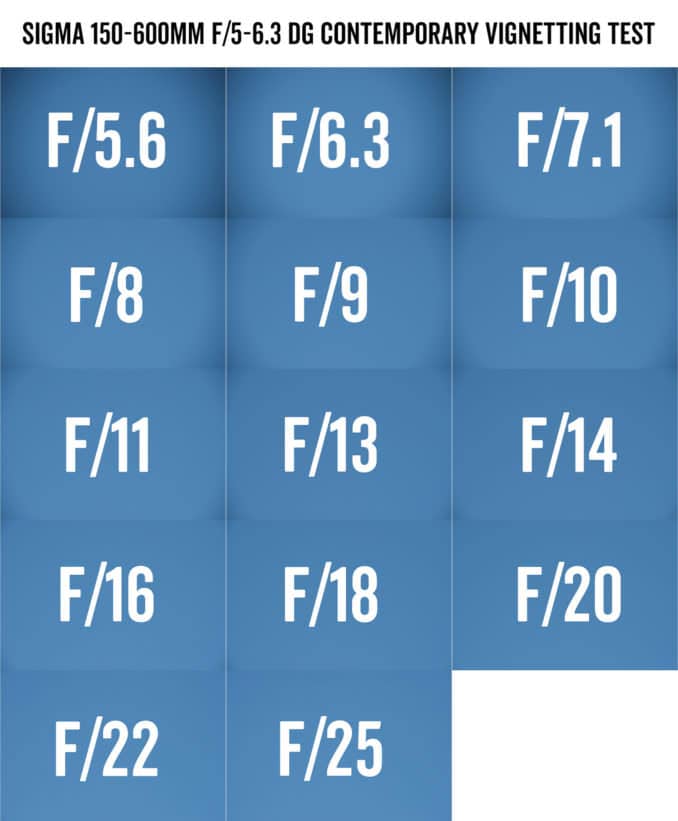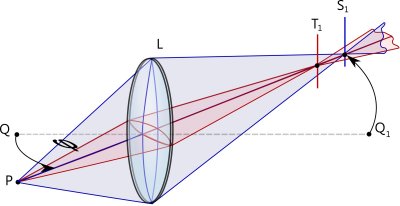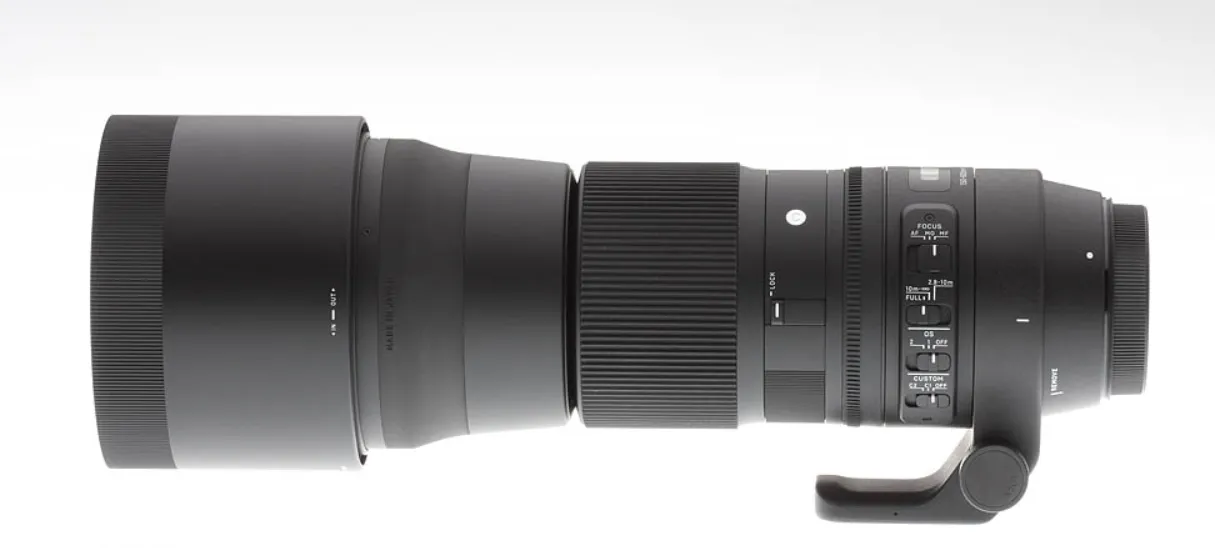My dream about a long telephoto lens finally came through. After a few weeks’s consideration, I bought the Sigma 150-600mm f/5-6.3 DG OS HSM Contemporary lens for my Nikon D5300 camera, which also included the TC1401 1.4x teleconverter, especially for this lens. Before I start the presentation on this teleconverter as well as the other one – TC2001 2x, which I bought a bit later separately I would like to take a detailed and quaint look at the primary item, which is the Sigma 150-600 f5-6.3 lens.
Traditionally I am going to run you through all major features of the given lens, following the testing schedule. However, there is one thing, to which I want to pay special attention – the long-distance views. There are not enough photo examples on the web, which show some objects from a different perspective – keeping their similar angular size when the photograph is taken far away. It gives us the opportunity to see how this photographed object corresponds with other ones in the background, whereas all of them are kept in a similar angular dimension. On another hand, I would like to see how the Sigma C 150-600mm copes with long-distance observations, which I am especially interested in. Let’s make a start then.
1. BUILD QUALITY AND DESIGN
I decided to describe a bit the build quality of this lens because this is a completely different size than I used to deal with by now. Sigma 150-600mm f/5-6.3 DG OS HSM Contemporary is a massive lens with almost 2kg weight (1930g) and over 26cm length as its 150mm position. You should have it in mind because in my opinion is not really possible to use this device without the tripod. Theoretically, you can still shoot images with your camera with Sigma 150-600mm attached, but personally, I could be afraid of some unforeseen and sudden drop-off and mount break. I did a few images by Sigma 150-600 f5/6.3 and TC1401 mounted to Nikon D5300 and it was really hard to keep everything steady. The total weight of the Sigma 150-600 and TC1401 device is 2120g. Having a short experience with these 2 objects mounted to my Nikon D5300 camera without a tripod I can assume, that the maximum safe lens weight for a Nikon F mount can be about 2.5 kg. Even if you have a lighter device, gravity will put stress on the camera lens mount. The Sigma 150-600 f5/6.3 DG OS HSM Contemporary is almost third times lighter and about 4 cm shorter than its Sports counterpart.

Taking pictures with a heavy lens is really complicated because is hard to stabilize the whole mechanism, even in the shortest exposures. You definitely need the tripod and there is no doubt about it.
Regarding other build and design features, I am leaving you with this link, where you can read about various details. I just would like to characterize the modes available on the side just next to the metal mount encircling the contact plate. There is an array of switches, where you can see:
-> FOCUS – controlling the focusing mechanism mode, which includes the following choices:
– AF – AutoFocus (with still working manual ring)
– MO – Manual Override – You can move the ring while still working AutoFocus
– MF – Manual Focus
-> AUTOFOCUS WORKING RANGE LIMITATION – comprised of three possible positions:
– FULL – from 10m to infinity
– from 2.8 to 10m
-> OS – the Optical Stabilization with 3 modes (OFF, 1, 2)
-> CUSTOM – including OFF, C1, and C2, which allows choosing between focusing mechanism modes saved by the user after the Sigma USB dock lens is calibrated.
There is another switch worth attention to, which is located further behind the manual focus ring. This is the locker, which can block your lens and prevent it from unfolding.

Sigma 150-600mm f5/6.3 optical system is comprised of 20 elements positioned in 14 groups (Pic. 4).

The optical stabilization works well with 30-3.3 EV (0 EV equivalent to 1/400s at 600mm) efficiency, which is surprisingly a bit better than its Sport counterpart.
2. SHARPNESS AND IMAGE RESOLUTION
The sharpness assessment in the long focal lens like Sigma 150-600mm is a key thing if we are considering using it for long-distance views, in which usually more than 1 plane appears in our frame. I obviously mean a few distant plans (i.e. mountain ranges + some hills with residential areas located a bit closer), which we want to have clear and sharp unlike closer objects with bokeh beyond. Having the 600mm focal lens targeted for some distant objects means a wide depth of field, with a very narrow range of the best sharpness counterintuitively. The Contemporary version has one important disadvantage here, against its Sports counterpart. If you see the infinity symbol, it’s not indicated by a parallel dash connecting the line indicating the current sharpness (Pic. 5), which is unfortunately troublesome, when focusing manually.

Let’s back to the sharpness assessment, which is comprised of our acutance and image resolution. The image resolution is defined by the Modulation Transfer Function (MTF), which basically defines how well regional differences in brightness of a subject are maintained while going through a camera lens. The value of MTF can vary between 0 and 100, where 100 means a perfect contrast perseveration. Otherworldly 100 (%) means, that the camera lens can render the original contrast of the object. A value other than 100 means, that some portion of contrast is being lost. For example, if the MTF value is 0.9 it means, that 90% of the original contrast remains, and the camera lens reduces the contrast by 10%. The Modulation Transfer Function (MTF) is strongly related to the Contrast Sensitivity Function (CSF) defining the number of cycles per degree on the human retina. This number of cycles per degree defines our perceived sharpness, which is subjective because some objects can be sharp for one person and a bit blurry for another one. The overall sharpness is affected by acutance and resolution. Because our perception can be influenced by many variations, it’s hard to gauge the sharpness objectively. The manufacturers formulated the objective method to measure lens performance then – the Modulation Transfer Function (MTF). The value of MTF corresponding to the best with perceived image sharpness is 50% contrast loss in its low-frequency value. In turn, it’s called the MTF50, where 50 derives from the aforementioned 50% of contrast fall. In photography, the MTF50 factor is used and expressed in lpmm values. The lpmm is the number of lines concentrated into 1mm. For MTF50 the biggest factor is 50lpmm, which means the sharpest image. If the value is lower, i.e. 40lpmm, it means, that the image resolution is worth 10%. However, if you don’t see the live examples, basically it will mean nothing to you unless you are an expert.
Let’s see how it looks in the Sigma 150-600mm f/5 – 6.3 Contemporary version. According to the LensTip.com image resolution test, the best sharpness is gained between 150 and 300mm and at the largest apertures (Pic. 7).

Next, it falls abruptly between f/11 and f/16, which we can clearly see in the image quality. In general, for all focal ranges, this drop is significant and hovers about 5lpmm, up to even 7lpmm (300mm at the edge). The smallest apertures are adversely affected by diffraction.


Looking at the images above, especially at the cropped ones we can spot a significant drop of sharpness between the f/11 and f/16 apertures. It’s typical for a whole focal range, unfortunately.


At the 300mm aperture is the biggest sharpen lost between f/11 and f/16, as the MTF50 difference between this stop exceeds 5lpmm for this focal range.

The smallest sharpness deterioration appears to be at 450mm focal length. However, the f-stop has been shifted a bit towards f/13 – f/18. It’s driven by an overall aperture range for this focal length, which is between f/6 – f/25 instead of f/5 – f/22 for shorter zooms.


The longest focal length – 600mm is the most important for long-distance watchers. It gives us about 25x effective zoom if we consider the optic of our eye, so it’s pretty much the same expression as watching something through very good binoculars. The distant objects are sharp, but moving towards smaller apertures, we can spot some fuzziness at the edges. The image seems to be not clear enough. The other reason behind it is a bit longer exposure time, as the aperture is narrower. The 1/50s exposure time is the upper limit of the sharp handheld result. Going beyond this point without some reasonable tripod we might be not able to take images without any jitters. Anyhow, the widest aperture works the best here. Look at the very middle of the distant watchtower, where the construction planks crossing each other can be seen differently (Pic. 17).

The last thing to mention is the image resolution difference between the centre and the edge. According to the laboratorian tests, the sharpness deterioration is getting bigger as we move away from the middle of the frame. I’ve checked it by the 600mm crop underneath (Pic. 18). To be honest, the sharpness fall is not as big as can be observed between the following f stops.

The image towards the edge gets a bit blurry. Since you can try to count the tree limbs near the watchtower, it’s fairly impossible on the right.
Another good way to visually check the image resolution and sharpness in Sigma 150-600mm f/5 – 6.3 Contemporary, and I guess any other telephoto lens is to make a zoom on some text visible nearby.
I did the experiment at the recreation ground, where some texts printed out were visible as well as the information boards.
In the first image, you can see the information box as well as the closure information including the pure Word text with font sizes 40-44. Everything is clearly readable from about 100m distance. Moreover even the smallish text underneath: “Waterbeach Parish Council, 14 March 2020” can still be spotted!

The alert box is also readable, however, this font (about 26-28 size) looks a bit blurry.

Another information box was located about 90m away. I did check the reading ability at various focal lengths (Pic. 21 – 23).



When the image is taken at the longest focal length, we are practically able to read some stuff, and not only headings! It proves the high level of sharpness of the Sigma 150-600mm Contemporary version.
In conclusion, the Sigma 150-600 f/5 – 6.3 Contemporary version features a very good level of sharpness, which appears to be the best at the shortest focal lens. Moreover, the best result can be in the range of apertures between f/6-7.1 and f/11-13. Unfortunately for the apertures f/16 and smaller the sharpness is at most acceptable. Another typical affliction is the softness increasing as we move toward the frame edges. The sharpness pattern is more or less similar for a whole focal length range. If you are more interested in sharpness at all focal lengths and apertures I would recommend you visit this link and see how it looks. However, the authors were focused on objects located at shorter distances, which can be useful i.e. for bird watchers.
3. DISTORTION
The Sigma 150-600mm f/5 – 6.3 Contemporary lens suffers from a pincushion distortion, typical for the telephoto lens. It expresses the greatest magnification of the lens in the middle of the frame, making the photo edges bent.
The distortion issue in telephoto lenses such as this is very important when considering stacking panoramic views of distant objects, mountain ranges, etc. If this flaw is smaller, we can use a wider frame for stacking our panoramas and in turn fewer image shots.
Theoretically, according to laboratorian tests, the contemporary version of Sigma 150-600mm features a distortion value between 1,1 and 1,3% with the smallest typical for 150 and 450mm and the biggest at about 300 and 600mm (Pic. 24). It yields a bit the Sport counterpart, which has the distortion not bigger than 0,8%.

In practice, I barely could spot some landscape discrepancies in my panoramic pictures (Pic. 25 – 31) shrunk to 25% of their original size. Saying frankly, the 300mm focal length performed the best in my case. It’s possibly caused by the APS-C sensor, on which the lens was tested.

In my opinion, the biggest distortion occurs at the shortest focal length. At 200-250mm is nearly gone.


At 300mm and 400mm focal lengths, I didn’t spot any suspicious things in my panoramic image. It looks like the best performance throughout a whole focal range.


The distortion started to appear from 450mm onwards, whereas the biggest was noticed at 600mm, although not as big as at 150mm.



Concluding, I am impressed with the small distortion in this lens. After some small alterations, we can get really good-looking panoramic pictures.
4. VIGNETTING
The light-fall issue in the Sigma 150-600mm f5 – 6.3 DG OS HSM Contemporary version doesn’t have much impact on the overall image quality. The biggest value reaches about -0,42EV at 150mm. It’s about twice as good as in Nikkor 55-300mm f/4.5 – 5.6, where the light-fall reaches about -0,85EV (Pic. 33). Obviously, it’s not the same price league, but it’s the only other telephoto lens, which I owe, hence this comparison comes from. Anyway, I wouldn’t worry that much about the vignetting in the Sigma 150-600mm Contemporary version. The values mentioned above are the biggest. When you change the aperture i.e. 1 stop down, the situation improves diametrically.

The image below displays how the light-fall feature changes against the aperture value (Pic. 33).

To be honest, the same as in different lenses, which I had occasion to test and use, the vignetting affliction is visible under low light conditions mostly. See some examples below (Pic. 34 – 37).




Looking at the images above (Pic. 34 – 37), we can’t really complain about the vignetting issue in this lens. The light-fall is visible only in the last image, taken with the widest aperture. Although even here, the vignette doesn’t impact the image quality really.
5. CHROMATIC ABERRATION
The chromatic aberration issue, likewise the vignetting is not too big in Sigma 150-600mm f/5 – 6.3 DG OS HSM Contemporary version. Basically, the biggest occurs both at the shortest and the longest focal length. The 300mm focal length is almost free of aberration. Regardless of the professional investigation expressed by graphic data, I can say, that there is virtually no problem with it.


My private test showed the “constant” size of the chromatic aberration throughout a whole focal length range, although it doesn’t mean that it’s some problem. It can possibly increase slightly when moving towards the frame edge (Pic. 18). Again, it’s only a little thing and can be noticed, when the image is cropped (Pic. 41 – 44).


As you can see above, there is nothing to worry about really, regarding the chromatic aberration in the Sigma 150-600mm Contemporary lens. It’s rather invisible in images unless they’re cropped, where it appears marginally only.
6. COMA & ASTIGMATISM
Coma is a specific type of aberration, which affects only the light rays. These rays of light, visible as a point, pass through our lenses as shapes. The best way to check the coma issue is to place our camera a front of some diode or another source of the point light. One of the professional tests shows rather no big coma flaw for all focal ranges in Sigma 150-600mm f/5 – 6.3 when catching the light from the red diode (Pic. 45).

The image above shows obviously the comparison between the middle frame and the edge of the image generated by an APS-C sensor like in the Nikon D5300, at which this lens has been tested.
Coma aberration is an inherent property of telescopes using parabolic mirrors. The same as in telescopes, the coma plays an important role, especially in these lenses, which are used in astrophotography because the distant stars appear as the points of light. Analogically it works in long-distance observations, where our targeted object is comprised of a few points of light like the TV transmitter or so. Every point source of light from some distance might appear as a smallish shape. Fortunately, it doesn’t really apply to the Sigma 150-600mm f/5 – 6.3 Contemporary version, as we can see above and below.


Astigmatism is another flaw, which comes along with coma aberration. It cannot be fully eliminated from our lens, but it can be reduced quite well. The essence of astigmatism is a different position of focus for light rays entering the sagittal plane and different for light rays entering the tangential plane. The situation is depicted below (Pic. 48).

The Sigma 150-600mm f/5 – 6.3 Contemporary version performs quite well. The cropped images show some astigmatism, the best visible when reading some text from a distance (Pic. 49).

7. BOKEH & NEAREST DISTANCE
The bokeh in Sigma 150-600mm f/5 – 6.3 Contemporary version works really well, because of the quality of defocused light points. The light spread is even in all directions (Pic. 50, 51). As a result, the quality of the background looks good.


The minimum distance for a sharp image in the Sigma 150-600mm Contemporary version is 2.8m, which you can read from the scale of sharpness. However, I assure you, that you can reach the sharp effect even closer when reducing your distance to about 2.5m, which is great (Pic. 53 – 56).


All the images above show perfect sharpness at the minimum distance. We can say, that these images show some macro-like features because we can see a lot of details. They can be seen by the naked eye when we approach the object as much as we can. In this case, Sigma 150-600mm f/5 – 6.3 Contemporary lenses perform really well. It’s definitely good information for any birdwatchers, etc. Personally, I do not use this lens for this purpose.
8. FLARE
Sigma 150-600mm f/5 – 6.3 DG OS HSM Contemporary might have problems with working against bright spots of light. I personally have no occasion to test my Sigma 150-600mm Contemporary lens for the flare issues, but some tests have been completed and they reveal quite a bit of issue I think. Fortunately for APS-C sensors, the problem is partially seen off (Pic. 57).

On top of that Sigma 150-600mm, f/5 – 6.3 Contemporary lens comes with a big lens hood, which helps to work across bright light.
9. CONCLUSIONS & EXAMPLE IMAGES
Summarizing my amateur test of the Sigma 150-600mm f/5 – 6.3 DG HSM Contemporary lens I would like to list all pros and cons. The detailed description obviously you can find above, but if you only decided to scroll down quickly to this point I would like to point out all the major features of this lens. Remember, that my test was based on the APS-C sensor at Nikon D5300, so the final result on the FF sensor might vary a bit.
PROS:
- perfect zoom – the equivalent of 25x magnification against the lens of the human eye retina (the issue to develop in the future)
- very good sharpness at the widest aperture ranges
- small distortion – you can easily stack the panoramic images even manually
- very faint vignetting – almost no impact on your image
- small chromatic aberration with generally no influence on your image
- fast autofocus
- nice bokeh
- very good possibility of capturing the nearest object – it comes really sharp and detailed
- no big coma and astigmatism issues really
CONS:
- heavy, you need definitely the tripod for it
- a quite poor image resolution at the aperture smaller than f/13, which is a shame. It’s definitely the biggest flaw of this lens.
- lack of the sharpness indicator, which is troublesome, especially when focusing manually
- some flare issues might occur when capturing images against a bright source of light
See some example images below.






In general, the Sigma 150-600 f/5 – 6.3 could be worth its price. However, the issue with sharpness at an aperture lower than f/13 seems to be big enough for this complaint. The sharpness at this range is only acceptable. I think we can’t base it on an “Acceptable” level of sharpness, whilst this lens can have also the teleconverters attached. I am saying again, that this flaw covers all other positive features of this Contemporary version. The producers should definitely focus on it and improve this flaw in the near future.
Mariusz Krukar
References:
Links:
- https://alynwallacephotography.com/blog/2020/4/7/10-backyard-astrophotography-ideas-for-lockdown
- https://everything-astro.com/2019/05/21/astrophotography-with-a-sigma-150-600mm-contemporary-lens/
- Sharpness: What is it and How it is Measured
- Understanding the image sharpness
- Digital-picture.com: The Differences Between Sigma’s 150-600mm OS Sports and Contemporary Lenses
- https://www.strollswithmydog.com/mtf50-perceived-sharpness/
- https://www.camerastuffreview.com/en/mtf-with-the-naked-eye/
- https://www.cambridgeincolour.com/tutorials/lens-quality-mtf-resolution.htm
- Modular Transfer Function (MTS) – graphic explanation
- https://www.photoreview.com.au/tips/lens-tips/understanding-and-using-mtf-graphs/
- How to Read MTF Charts
- The Seven Deadly Aberrations
- https://www.imaging-resource.com/lenses/sigma/150-600mm-f5-6.3-dg-hsm-os-c/review/
- https://www.bhphotovideo.com/explora/photography/hands-review/sigma-150-600mm-contemporary-lens
- https://www.photographyblog.com/reviews/sigma_150_600mm_f5_6_3_dg_os_hsm_contemporary_review
- https://havecamerawilltravel.com/photographer/sigma-150-600mm-contemporary/
- https://www.pcmag.com/reviews/sigma-150-600mm-f5-63-dg-os-hsm-contemporary
- https://improvephotography.com/36962/sigma-150-600mm-sport-vs-contemporary-lens-review/
- Sigma 150-600mm Contemporary vs Tamron 150-600mm
- https://www.the-digital-picture.com/Reviews/Sigma-150-600mm-f-5-6.3-DG-OS-HSM-Contemporary-Lens.aspx
- https://www.lenstip.com/434.1-Lens_review-Sigma_C_150-600_mm_f_5-6.3_DG_OS_HSM-Introduction.html
Forums:
- https://stargazerslounge.com/topic/320104-sigma-150-600mm-for-deep-sky-widefield/
- Nikon D5300 and Sigma 150-600mm astrophotography
- Jupiter with a Sigma 150-600mm C
- Orion nebula (astrophotography) with the Sigma 150-600 S + D810
- Sigma 150-600 or Tamron 150-600
- Landscapeastro moving towards Astrophotography
- https://photo.stackexchange.com/questions/7117/where-can-i-find-the-maximum-lens-weight-for-my-camera
- Sigma 150-600mm Sport vs Contemporary Side by Side
- Shallow depth of field obsession
- https://photo.stackexchange.com/questions/35706/how-can-i-compare-mtf50-to-a-manufacturers-mtf-chart
Wiki:
Youtube:
https://www.youtube.com/watch?v=2jN_6ApM0Xg
https://www.youtube.com/watch?v=7_msTFAmwWY









